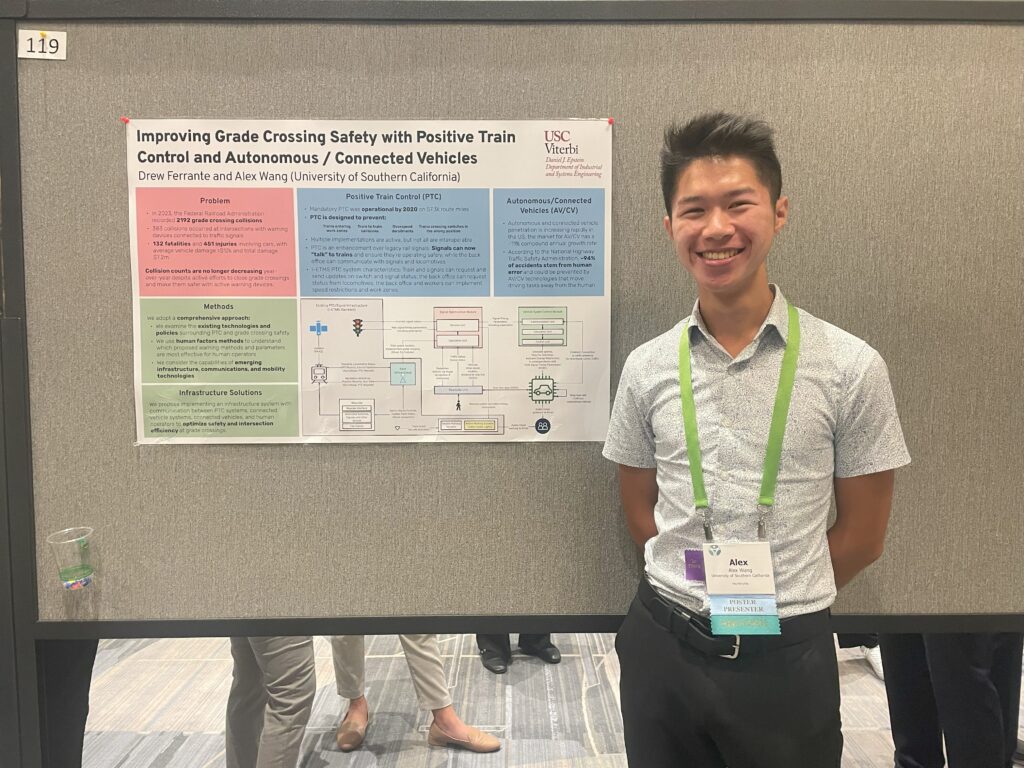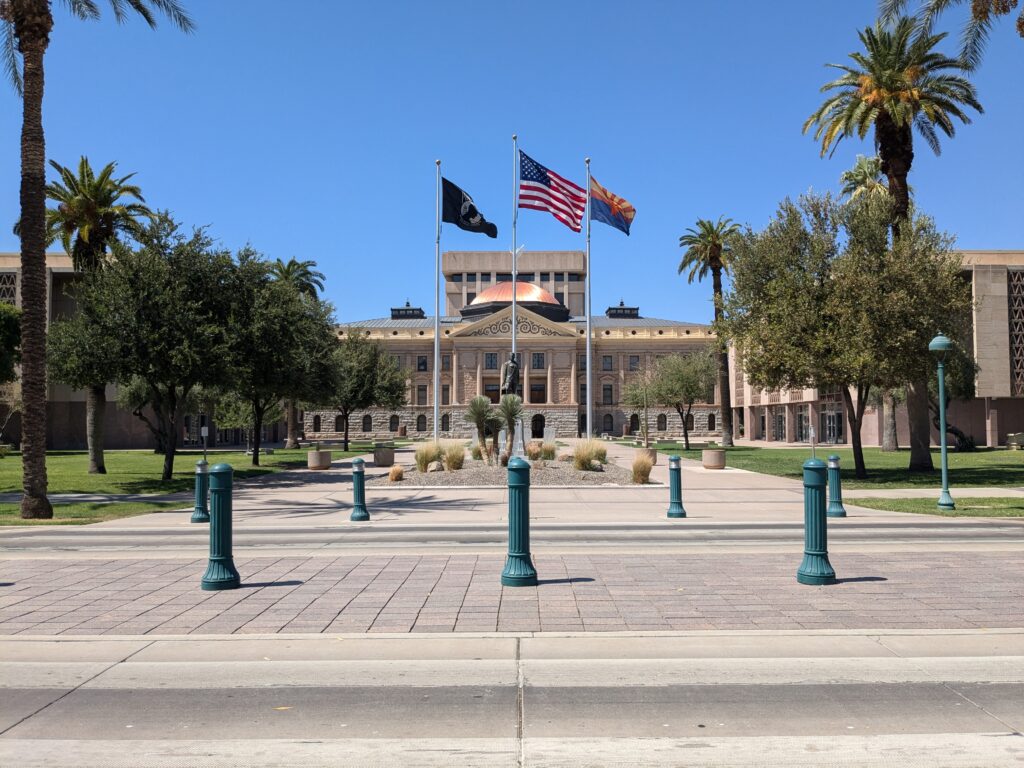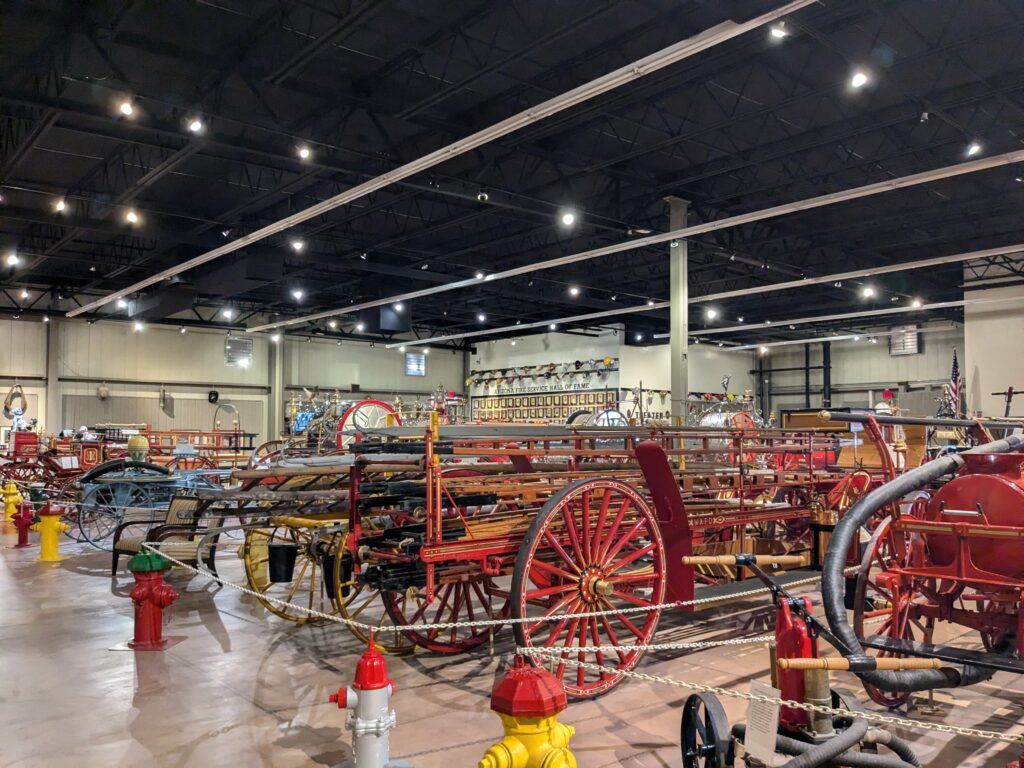I recently returned from the Human Factors and Ergonomics Society’s ASPIRE conference in Phoenix, AZ. At one of the poster sessions, I presented my current research project on integrating Positive Train Control and connected vehicles to improve safety at railroad crossings. I had great engagement from students and professionals alike, and I’m excited to incorporate what I’ve discussed as I continue to advance this project. As an industrial engineering student, I tend to see things from an optimization / technical lens, so I appreciated the human interaction-centered perspective that many of the ASPIRE attendees brought and shared with me.

Besides my poster presentation, my week in Phoenix was filled with plenty of other great experiences that have made me more excited about the human factors/ergonomics field:
- Networking: I loved talking to so many human factors professionals and students at receptions and networking events. Networking has always been my favorite part of conferences, and I’m grateful to have learned about the human factors journeys of everyone I spoke with. I’m definitely looking forward to seeing everyone again at future HFES conferences in Toronto and Chicago. (Also, I don’t think I’ve ever had so many people trying to convince me to do a PhD within the span of a week!)
- Learning: I’m relatively new to the world of HFE – this was my first HFES conference and I was one of the handful of undergraduate students there. So, I was very excited to learn from all the presentations available at ASPIRE. I was especially drawn to the surface transportation and education tracks; my favorite was a panel on EV charging challenges that exposed the many charging-related user experience issues slowing vehicle electrification. As an EV driver myself, it was interesting to see how the pain points I experience daily – people leaving their cars plugged in at 100%, broken chargers, chargers blocked by ICE cars – are actually being investigated as roots for a significant societal problem.
- Audience: I was surprised that nearly all the students were PhD students; human factors as a field seems to have a significantly higher PhD density than industrial engineering does. This is a very different audience than I’m used to, since most of the conferences I attend are professional ones where most attendees have a master’s degree at most. But I enjoyed the academic viewpoint that these doctoral students brought, their incredible level of expertise in their respective niches, and especially the camaraderie among each university’s student group. In general, it was an absolute blast to hang out with the students at ASPIRE!
- Discovering: Speaking broadly, it was fantastic to see just how widely applicable human factors is, from defense to healthcare and beyond. Human factors really does pervade everything in our daily lives! I was also surprised to see how many non-engineers there were, because I know human factors through an industrial engineering lens. I think at least 2/3 (if not more) of the attendees were from a psychology or cognitive science background which is awesome.
- A podcast? I was featured on Human Factors Cast, where I spoke a little bit on my background and my interest in the conference. This was my first time on a podcast, so it was a pretty cool experience. Take a look here: https://www.youtube.com/live/c7kOX42sfXM?si=QWaTh3DdWlMphJFV&t=955
I believe ASPIRE is the 8th professional conference I’ve attended in my two-ish years at the University of Southern California. My experience in Phoenix has reinforced my conviction that conferences are perhaps the single best thing one can do to keep up with (or learn about) a field. Although they tend to cause sleep deprivation for me, there just aren’t many other opportunities out there with such a high time and physical density of expertise and innovation. Where else can one speak with the leading researchers in a field
Of course, I had to make the most of my time in Phoenix, so I visited the Arizona State Capitol and the Hall of Flame Firefighting Museum (apparently the biggest firefighting museum in the world?!). And as a transportation nerd, I also had to find time to try the Valley Metro light rail, which could use some better frequency and transit-oriented development (Culdesac doesn’t count) – but at least it has an airport connection 🤔


I’m super stoked and grateful to have had the opportunity to attend and contribute to ASPIRE, and I’m genuinely excited to stay involved in HFES conferences in the future.